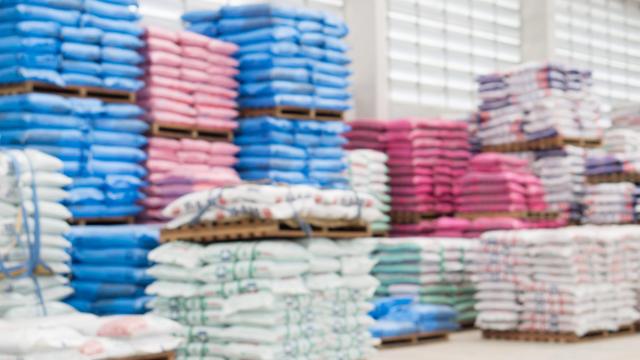If, like so many others, you first got into gardening during the pandemic, you’ve probably already figured out that it involves more than planting a few seeds or baby plants and letting nature work its magic. Sure, you may be aware that using fertiliser can help your plants grow, for example, but you may not be familiar with (or have heard of) the designated numbers given to different types of fertiliser.
Well, as it turns out, the three digits you see on the front of fertiliser packages actually mean something. In a recent article for BobVila.com, Mark Wolfe gives us the key to this fertiliser code.
Where are these fertiliser numbers and what do they mean?
The not-so-secret fertiliser codes can be found on the front of the package, and consist of three digits separated by hyphens (so like, 3-2-1). These are the fertiliser’s NPK numbers, which Wolfe says are the equivalent of the nutritional information labels that come on food — except indicating a particular fertiliser’s nutritional value for plants.
According to Wolfe, there are 16 known essential nutrients for plants, and the three most important are nitrogen (N), phosphorus (P) and potassium (K) — which is why they’re prominently placed on the front of packages of fertiliser:
The three NPK numbers on a fertiliser’s label represent the percentage of each element, by weight, inside the package. A package of 24-0-6 fertiliser, in other words, contains 24 per cent nitrogen, 0 per cent phosphorus, and 6 per cent potassium. The balance of the package’s contents is made up of other nutrients (which will be listed somewhere on the label), and/or inert ingredients.
Once you know the percentages of each element in a bag of fertiliser, you can determine the weight of each element that’s inside. This calculation comes in handy if you’ve had your soil tested and have been directed to amend your soil with a specific amount of a particular element.
What does each nutrient do for plants?
Depending on the combination and concentration of each of the three elements, some fertilisers are better suited for certain plants and soil conditions than others. That’s why Wolfe says it’s helpful to understand the role each element plays in plant growth, and how to choose a fertiliser with the right balance of nutrients for your horticultural needs.
Here’s a quick rundown of the qualities of each element, courtesy of Wolfe:
Nitrogen (N)
- Feeds leafy plant growth
- Used to help lawns grow and maintain their green colour
- Trees and shrubs don’t need as much nitrogen because they only grow one set of leaves per season
Phosphorus (P)
- Stimulates root, flower and fruit development, particularly in annual flower beds, fruiting plants (like tomatoes) and newly planted seedlings
- But if your soil already contains a decent amount of phosphorus, adding more can harm your plants
Potassium (K)
- Promotes strong stems, well-formed flowers, robust fruits and healthy roots
- Helps plants use water and resist drought
Read the rest of Wolfe’s article to learn more about fertiliser and how to pick one with the right combination of nutrients for your garden.

Leave a Reply
You must be logged in to post a comment.